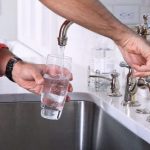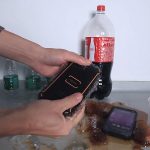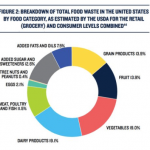Clean Drinking Water Standards Are Much Harder To Enforce Than They Should Be
Before the California state legislature began cracking down on agricultural pesticide use in the mid-1980s, farmers injected their lands with pest-killing fumigants, oblivious to their toxic effects on humans. Two such pesticides were Telone, made by Dow Chemical, and D-D, made by Shell. Both contained 1,2,3-trichloropropane, or TCP–a carcinogenic byproduct of the processes used to develop soil fumigants, that, even according to the manufacturers, contributed little to the products’ efficacy. TCP never should have been in the pesticides in the first place, but by the time the Dow and Shell stopped manufacturing the products in the mid-80s, the carcinogen had already leaked into the state’s water supply, where it still remains.
Since 2001, TCP has been detected in the water systems serving over 8 million Californians, according to a new report from the Environmental Working Group. It’s also been detected in water supplies in 13 other states across the country. Because the chemical is unregulated by both the state of California and the Environmental Protection Agency, public utilities are neither required to test their water for TCP levels, nor install filters to clear the water of the chemical. But after more than 40 towns and communities in California’s San Joaquin Valley–the state’s agricultural heartland–filed lawsuits against Dow Chemical and Shell in the mid-2000s. Now the California State Water Resources Control Board is beginning the process of setting a Maximum Contaminant Level (MCL) on TCP for the first time. Setting a MCL would require public water systems to test their water and, if needed, install filtration devices to bring the supply into compliance with the legal limit.

The San Joaquin Valley communities brought the lawsuits after learning that high TCP levels in their water supplies were linked to increased incidences of cancer and kidney disease. The MCL would hold utilities responsible for testing their water supplies for TCP, and the lawsuits would make Dow and Shell to absorb the cost of removing the contaminants by paying out a sum of money that the local utilities could then use to install filtration devices; a case already settled in the town of Clovis saw the Shell paying out $ 22 million in damages. A handful of other states, including Hawaii and New Jersey, have pushed their state legislatures to adopt a limit on the chemical, but their efforts have so far been unsuccessful.
Though TCP is legally unregulated, that doesn’t mean the state has been unaware of its health risks until now. In 2009, California set what’s called a “public health goal,” a guideline (but not a legally enforceable limit) determining the amount of a chemical in the water supply that will cause no more than one additional case of cancer out of a million people who drink it and shower with it daily for a lifetime. For TCP, it’s less than one part per trillion–that’s around 1,000 times smaller than a single drop of water in an Olympic-sized pool. “To put it in perspective, the risk of most chemicals is measured in parts per billion,” Bill Walker, a senior scientist at the EWG, tells Fast Company. The stringent nature of the TCP public health goal demonstrates how toxic the chemical is, yet 94 public water systems have TCP levels above that limit.

One of the ongoing missions of the EWG, Walker says, is to inform people about what’s in their drinking water. The organization regularly works with a database compiled by the Environmental Protection Agency called the Unregulated Contaminant Monitoring Rule, which includes information on the testing the EPA asks utilities to do each year for contaminants that don’t yet have federal standards. “We think it’s very important that people realize there are contaminants in your drinking water for which there aren’t any standards, and are known to be quite harmful,” Walker says.
Since the Safe Drinking Water Act was amended in 1996, the EPA has ordered monitoring for over 80 unregulated contaminants, Walker says, including chloromethane, an explosive byproduct that can form when chlorine is used to disinfect water, and bromomethane, a combustible gas used as an agricultural fumigant. They have moved forward to set regulations on just one: perchlorate, an explosive ingredient used in rocket fuel and found in water sources all over the country.

Regulating such contaminants, Walker says, “is a log jam in the EPA program–part of that is due to lack of resources, and a lot of it can be attributed to lack of political will.” The IRIS Program, through which the EPA evaluates chemicals for their toxicity, is on the chopping block in Donald Trump’s 2018 budget proposal. Utilities and related industries also oppose regulations, as it would cost money for them to come into compliance with the limits. For evidence of how little recourse communities affected by poor water quality have to advocate for political assistance, look no further than Flint, Michigan, where blatant lead contamination in the water supply plagued the city for at least two years before the government stepped in. It will likely take another two years for the city’s pipes to be replaced.
But if the state of California moves to establish an MCL on TCP in a vote later this month, it will give communities more leverage in court to pursue lawsuits against companies like Dow and Shell, who were initially responsible for the presence of the chemicals. Because many of the most affected communities in California are at the lower end of the economic spectrum, they could not afford to absorb the cost of installing filters in their water systems alone–Walker estimates that would increase the cost of household water bills tenfold. But by holding corporations responsible under a legally enforceable limit, the state and communities could begin to move forward on alleviating a public health risk that’s too often disregarded.
(38)














